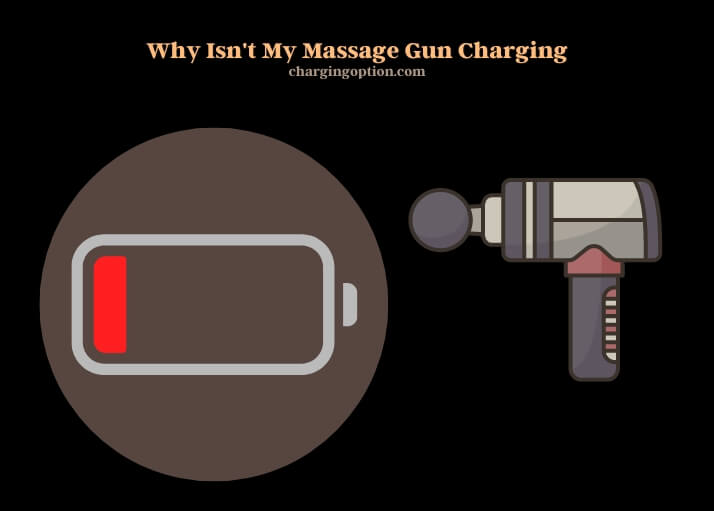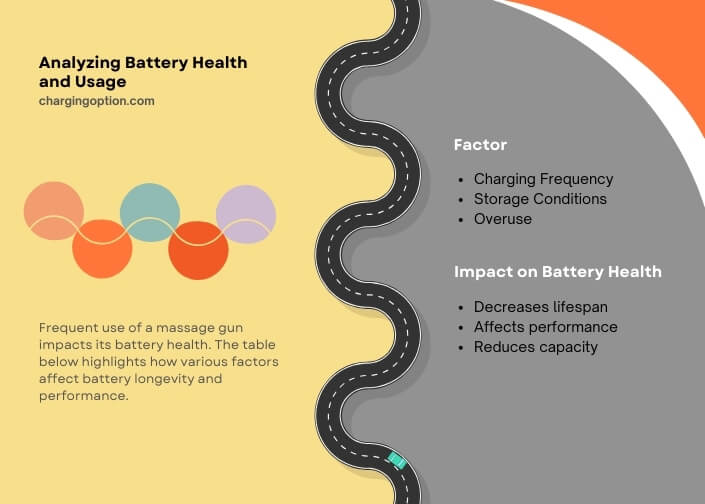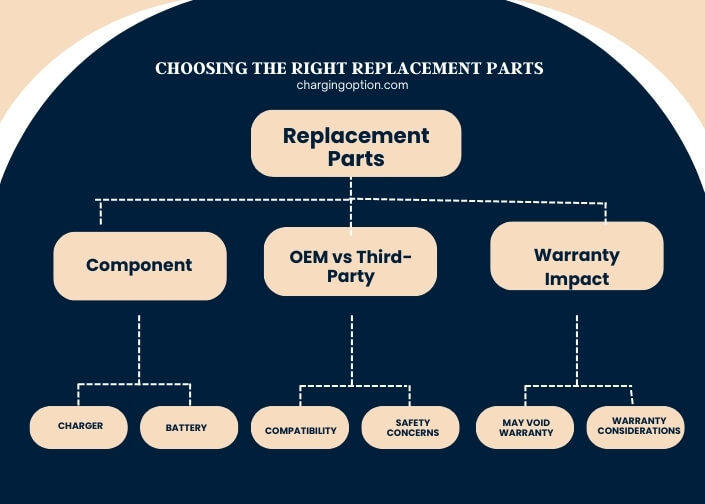The inability of a massage gun to charge can often be traced back to issues with the battery, charging cable, or power source. These components are crucial for the device’s proper functioning and any malfunction can lead to charging problems.
A massage gun might not charge due to a variety of reasons, each affecting the device’s performance and usability. Battery degradation is a common issue, as all rechargeable batteries have a limited lifespan and their capacity diminishes over time. This natural wear and tear can eventually prevent the battery from holding a charge.
The charging cable and port are also prone to damage. Frequent use can lead to wear and tear on these components, potentially causing a poor connection or complete failure to charge. Dust and debris accumulation in the charging port can further obstruct the connection, making it difficult for the device to charge properly.

Using an incorrect or faulty power source can also be a significant factor. Devices require specific voltages and currents to charge efficiently, and a mismatch can hinder the charging process. It’s essential to use the charger provided by the manufacturer or ensure that any third-party charger meets the device’s specifications.
Regular maintenance, such as cleaning the charging port and using the device according to the manufacturer’s guidelines, can help mitigate these issues and extend the lifespan of your massage gun.
Key Reasons Behind Charging Failures
Charging issues with massage guns often stem from several common problems. Battery degradation is a primary concern; over time, the battery’s ability to hold a charge diminishes. This is a natural consequence of the lithium-ion batteries used in these devices, which have a finite number of charge cycles. Faulty charging cables are another frequent culprit. Wear and tear can damage cables, leading to poor connections or no connection at all.
Using an incompatible power source can prevent your massage gun from charging correctly. Devices require specific voltages and currents, and a mismatch can halt the charging process or even damage the battery.
Step-by-Step Troubleshooting Guide
Identifying and resolving charging issues involves a systematic approach. Start by examining the power source to ensure it’s active and capable of delivering the necessary power. Next, inspect the charging cable for visible damage or wear. If the cable and power source are functional, try resetting the massage gun, as software glitches can sometimes prevent charging. If these steps fail, the problem may lie within the device itself, requiring professional inspection or repair.
Analyzing Battery Health and Usage
Frequent use of a massage gun impacts its battery health. The table below highlights how various factors affect battery longevity and performance.
| Factor | Impact on Battery Health |
| Charging Frequency | Decreases lifespan |
| Storage Conditions | Affects performance |
| Overuse | Reduces capacity |
Optimal charging habits, such as avoiding complete discharges and not overcharging, can extend battery life. Proper storage, particularly in terms of temperature and humidity, also plays a crucial role in maintaining battery health.

Maintenance Tips for Optimal Charging
Maintaining your massage gun involves regular cleaning and proper storage. Dust and debris can accumulate in the charging port, interfering with the connection. Use a soft, dry brush to gently clean the port. Storing the device in a cool, dry place away from direct sunlight helps preserve battery integrity.
Following the manufacturer’s guidelines for battery care can prevent charging issues.
Choosing the Right Replacement Parts
Selecting compatible chargers and batteries is vital for the device’s longevity and safety. The table below outlines considerations for choosing replacement parts.
| Component | OEM vs Third-Party | Warranty Impact |
| Charger | Compatibility | May void warranty |
| Battery | Safety concerns | Warranty considerations |
OEM (Original Equipment Manufacturer) parts are generally recommended to ensure compatibility and safety. Reputable third-party components can offer a cost-effective alternative without compromising on quality, provided they meet the device’s specifications.

FAQs
Is Your Massage Gun’s Battery Official?
Using non-official or counterfeit batteries can lead to charging issues. These batteries may not meet the specific power requirements of your device, leading to poor performance or failure to charge. Official batteries are designed to match the exact specifications needed for your massage gun, ensuring optimal performance and safety.
Counterfeit batteries often lack the quality and safety features necessary to protect your device and may even pose a risk of damage or injury. Always purchase batteries from reputable sources to guarantee they are genuine and compatible with your massage gun.
Could a Software Glitch Be the Culprit?
Software issues can sometimes prevent your massage gun from charging properly. These glitches can interfere with the device’s ability to recognize the charger or manage the battery’s charging process efficiently. Performing a reset on your massage gun can often resolve these software-related issues.
Consult your device’s manual for instructions on how to reset it. This process typically involves holding down a combination of buttons for a few seconds. A reset can refresh the device’s system, potentially fixing any software glitches that were hindering charging.
Is the Charging Port Clean?
Dirt and debris accumulating in the charging port can obstruct the connection between your massage gun and its charger. This physical barrier can prevent the charging pins from making a secure connection, leading to charging failures.
Regularly inspecting and cleaning the charging port can help maintain a clear path for charging. Use a small, soft-bristled brush or a can of compressed air to gently remove any dust, lint, or debris from the port. Avoid using metal objects to clean the port, as they can cause damage or create a short circuit.
Are You Using the Correct Charging Technique?
The way you charge your massage gun can affect its ability to charge. Ensure you’re following the manufacturer’s recommended charging practices. This includes using the original charger that came with your device, as it is specifically designed to match your massage gun’s power requirements.
Make sure to plug the charger into a suitable power outlet and connect it securely to your device. Some massage guns have specific instructions for charging, such as charging for a minimum amount of time before first use or not using the device while it’s charging.
Has the Massage Gun Overheated?
Overheating can temporarily disable your massage gun’s charging capabilities. Electronic devices, including massage guns, have built-in safety features that prevent charging when the device’s temperature exceeds safe limits.
This is to protect the internal components and battery from damage due to excessive heat. If your massage gun has been used extensively or exposed to high temperatures, allow it to cool down before attempting to charge it again. Placing the device in a cool, well-ventilated area can speed up the cooling process.
Is There an Issue With the Power Outlet?
Sometimes the problem isn’t with the massage gun or its charger but with the power source itself. Faulty or incompatible power outlets can prevent your device from charging. Try plugging the charger into a different outlet to see if this resolves the issue.
Ensure that any power strips or extension cords used are functioning correctly and capable of handling the charger’s power requirements. Testing the outlet with another device can help determine if the issue lies with the power source.
Summary
Charging issues with massage guns can arise from battery degradation, faulty cables, and incompatible power sources. A systematic troubleshooting approach can help identify and resolve these problems. Maintaining battery health through proper use and storage, along with choosing the right replacement parts, ensures your massage gun remains functional and efficient.
